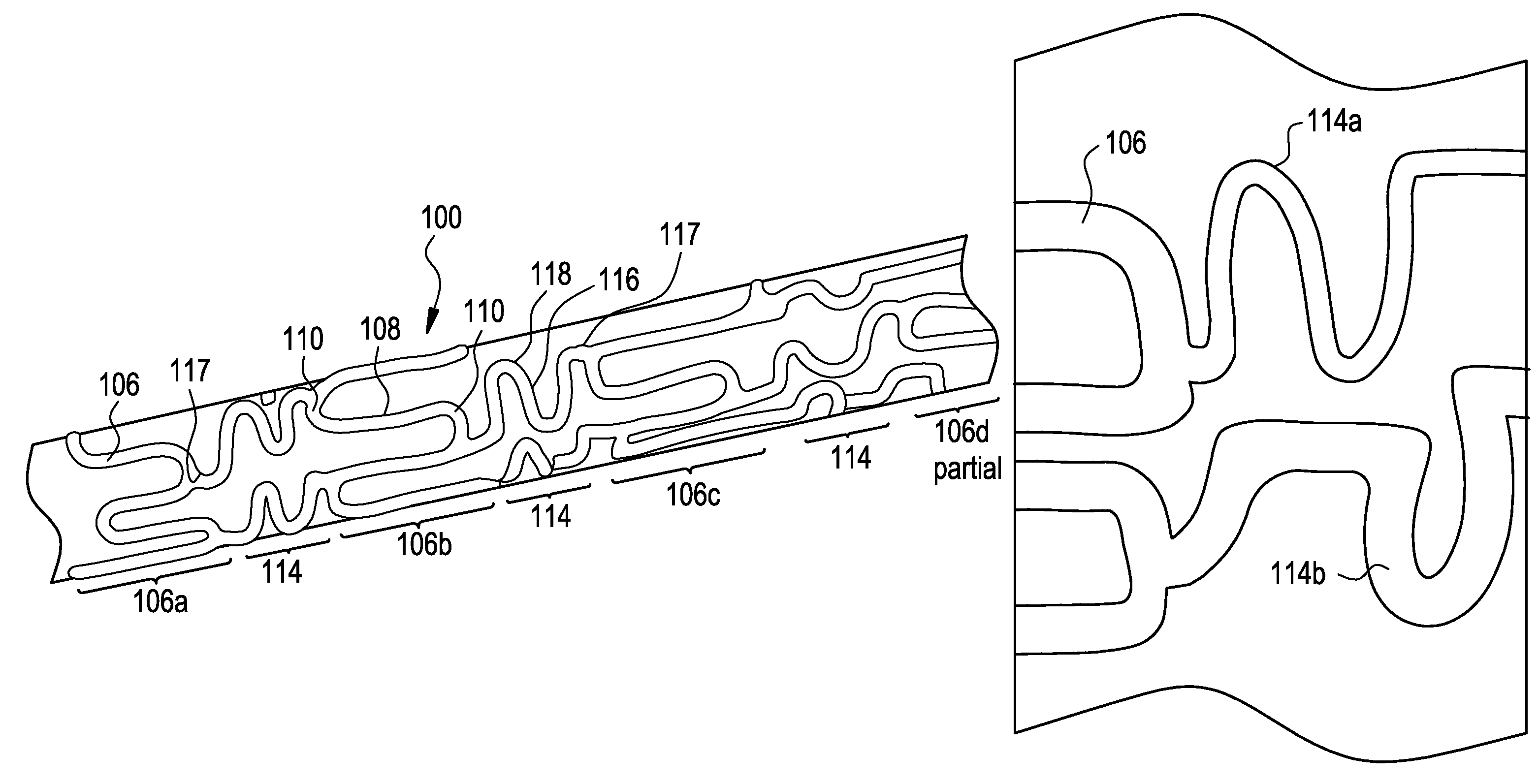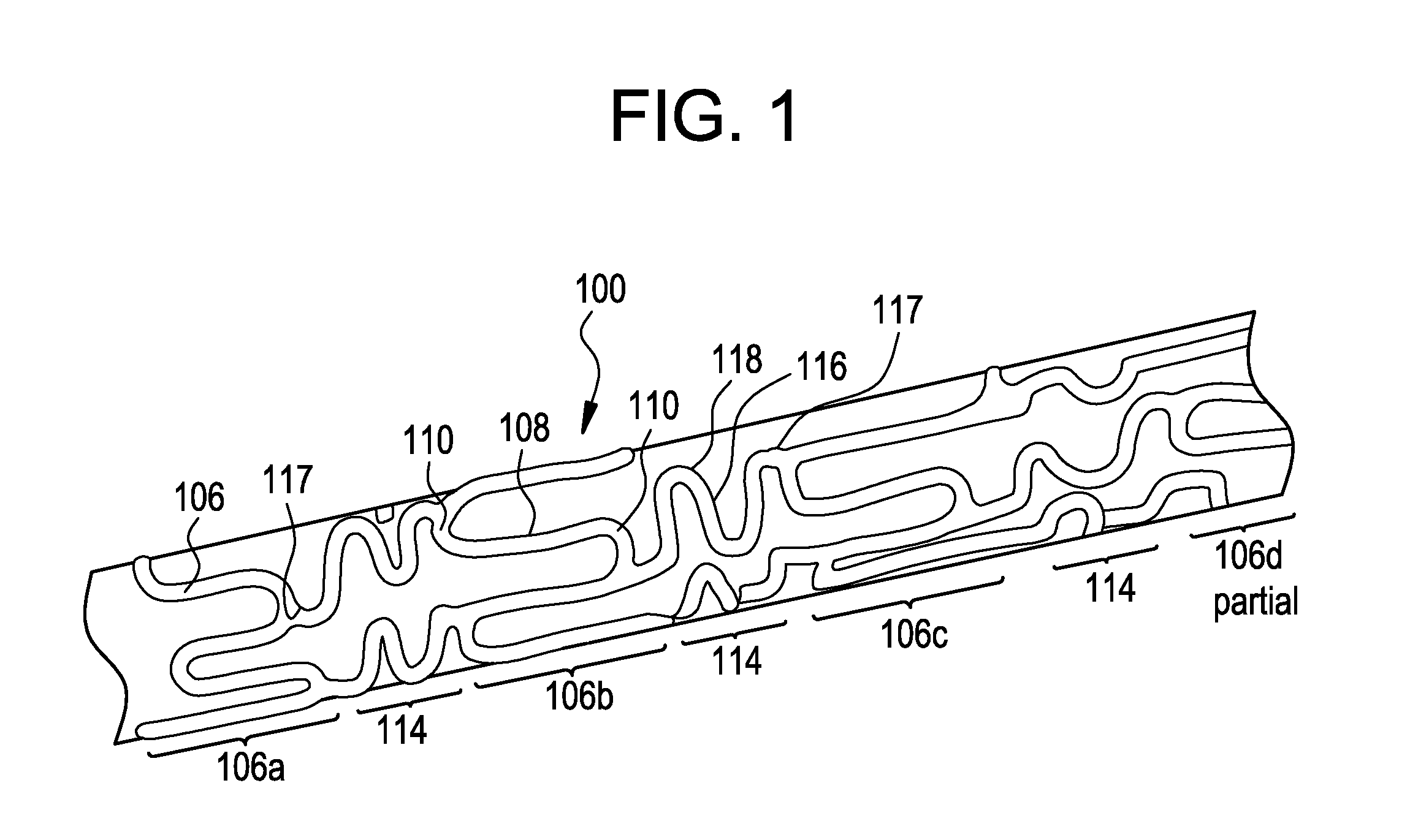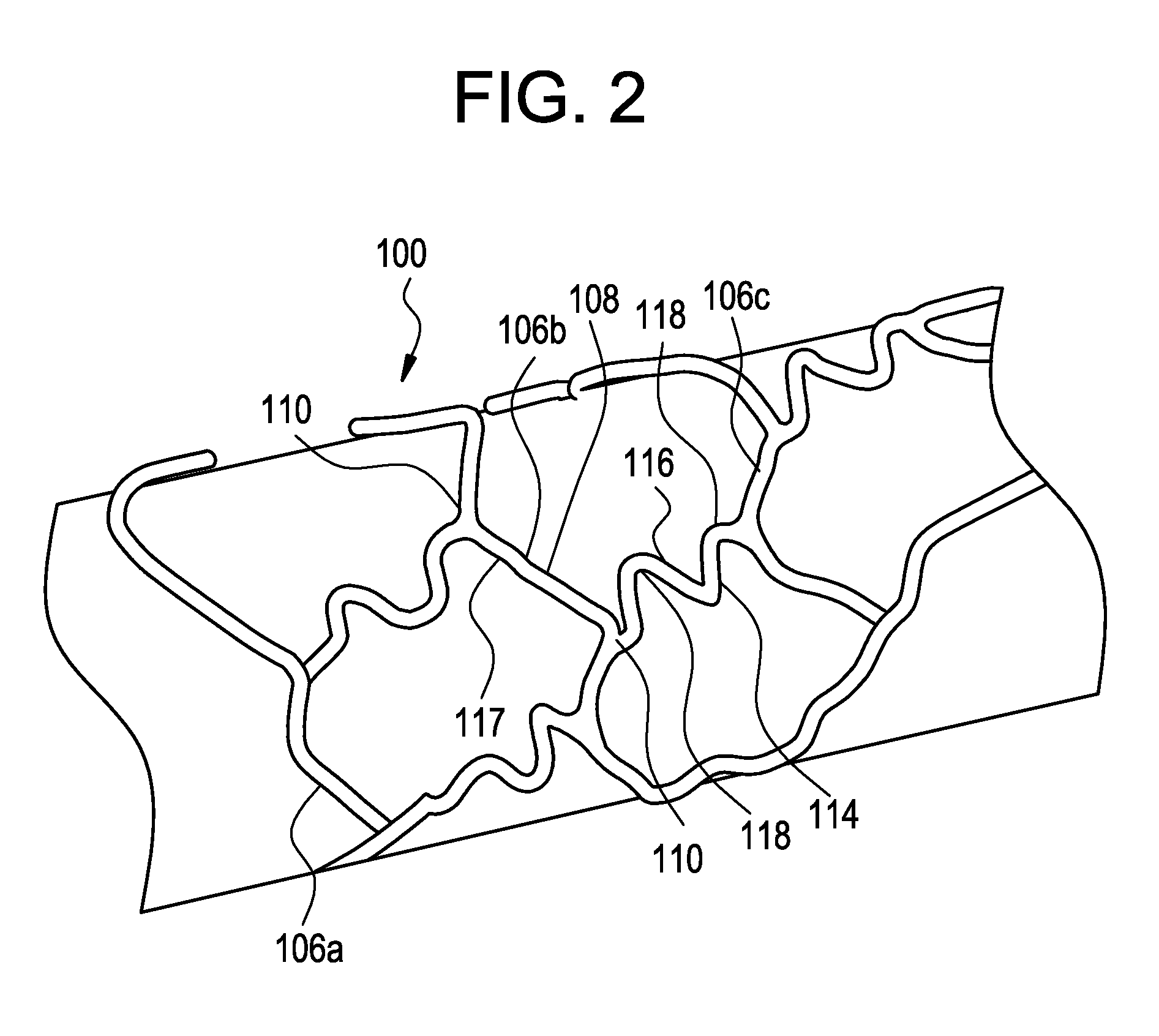Intraluminal medical device having variable axial flexibility about the circumference of the device
a medical device and axial flexibility technology, applied in the field of expandable intraluminal medical devices, can solve the problems of stent fatigue failure, metal cracking, and strain experienced by each strut member, and achieve the effect of facilitating device orientation
- Summary
- Abstract
- Description
- Claims
- Application Information
AI Technical Summary
Benefits of technology
Problems solved by technology
Method used
Image
Examples
Embodiment Construction
[0030]FIG. 1 shows an exemplary medical device, here a stent, illustrating a device that can be modified in accordance with the present disclosure. The medical device 100 comprises one or more hoop components 106 having a tubular configuration with proximal and distal open ends defining a longitudinal axis extending therebetween. Each hoop component is formed as a continuous series of substantially longitudinally oriented radial strut members 108 and a plurality of radial arc members 110 connecting adjacent radial struts.
[0031]The device of the present invention includes connecting elements 114 joined to longitudinally adjacent hoop components 106. In this specific depiction, adjacent flexible struts 116 are connected at opposite ends in a waveform-like pattern shown here as substantially N-shaped. As illustrated, the plurality of flexible arc members 118 of connecting elements 114 have a substantially semi-circular configuration and are substantially symmetric about their centers, ...
PUM
 Login to View More
Login to View More Abstract
Description
Claims
Application Information
 Login to View More
Login to View More - R&D
- Intellectual Property
- Life Sciences
- Materials
- Tech Scout
- Unparalleled Data Quality
- Higher Quality Content
- 60% Fewer Hallucinations
Browse by: Latest US Patents, China's latest patents, Technical Efficacy Thesaurus, Application Domain, Technology Topic, Popular Technical Reports.
© 2025 PatSnap. All rights reserved.Legal|Privacy policy|Modern Slavery Act Transparency Statement|Sitemap|About US| Contact US: help@patsnap.com



